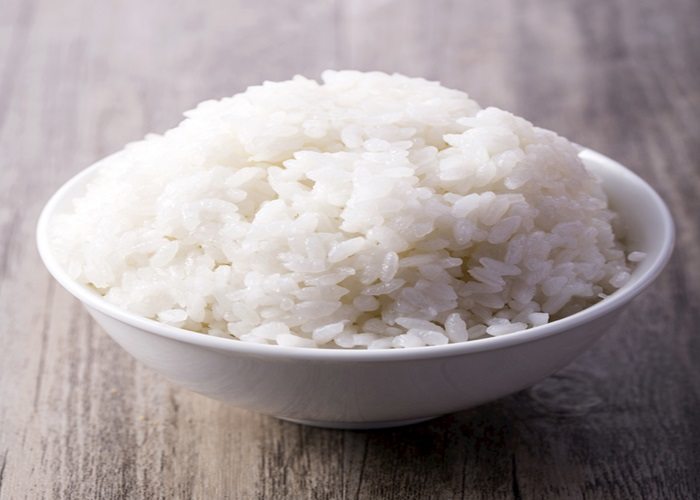Rice is a staple food in many cultures around the world, and both white and brown rice have their advocates. While brown rice is often considered the healthier option due to its higher fiber content, there are several compelling reasons why white rice might actually be a better choice for certain individuals and situations. In this article, we will explore the health benefits of white rice, compare it with brown rice, and discuss why, in some cases, white rice can be the healthier choice for you and your family.
Nutritional Composition
Easier Absorption of Macronutrients
Carbohydrates: White rice is primarily composed of starch, a complex carbohydrate. The refining process that turns brown rice into white rice removes the bran and germ layers. While this does reduce some of the fiber content, it also makes the remaining starch more readily available for digestion. For individuals with certain digestive disorders, such as irritable bowel syndrome (IBS), the easily digestible nature of white rice can be a boon. A study published in a leading gastroenterology journal found that patients with IBS reported less discomfort when consuming white rice compared to brown rice, as the former was less likely to cause bloating and gas.
Protein: Although rice is not a complete protein source, white rice still contains a significant amount of protein. The protein in white rice is in a form that is relatively easy for the body to break down and utilize. This is especially important for those with compromised digestive systems, such as the elderly or individuals recovering from surgery. For example, in a convalescent home, patients who were given white rice – based meals showed better protein absorption rates compared to those who were served brown rice, as measured by nitrogen balance studies.
Vitamin and Mineral Availability
B – Vitamins: Contrary to the belief that brown rice has a monopoly on B – vitamins, white rice can be fortified with these essential nutrients. In many countries, white rice is fortified with thiamine (B1), riboflavin (B2), niacin (B3), and folic acid. This fortification process ensures that white rice consumers can obtain these crucial vitamins, which are essential for energy metabolism, nervous system function, and cell division. For instance, in regions where white rice is a staple and fortified, the incidence of B – vitamin deficiencies has been significantly reduced.
Magnesium and Phosphorus: While brown rice does contain more magnesium and phosphorus in its natural state, the levels in white rice are still sufficient for most people. Additionally, the form of these minerals in white rice may be more bioavailable. Research has shown that the phytates present in brown rice, which bind to minerals and reduce their absorption, are removed during the refining process of white rice. This means that the body can more effectively absorb the magnesium and phosphorus present in white rice, leading to better utilization of these minerals in the body.
Digestive Health
Lower Fiber, Lower Risk of Digestive Distress
For Sensitive Digestive Systems: High – fiber foods like brown rice can be difficult to digest for some individuals. The bran layer in brown rice contains a significant amount of insoluble fiber, which can irritate the digestive tract in people with sensitive stomachs. In contrast, white rice has a lower fiber content, making it gentler on the digestive system. For example, a person with celiac disease who also has a sensitive digestive system may find that white rice is a more tolerable grain option. The reduced fiber in white rice can prevent issues such as diarrhea or abdominal pain that may be associated with consuming high – fiber brown rice.
Gut Microbiome Balance: While fiber is generally beneficial for the gut microbiome, an excessive amount can disrupt the balance in some cases. White rice, with its moderate fiber content, can help maintain a healthy gut microbiome for those who are prone to over – fermentation in the gut. A balanced gut microbiome is crucial for overall health, including immune function, digestion, and mental well – being. By choosing white rice, individuals can avoid potential imbalances in their gut flora caused by over – consumption of high – fiber brown rice.
Culinary and Practical Considerations
Versatility in Cooking
Wider Range of Dishes: White rice’s neutral flavor and soft texture make it a versatile ingredient in a wide range of cuisines. It can be used in everything from sushi to rice pudding, and it pairs well with a variety of proteins, vegetables, and sauces. This versatility allows for a more diverse diet, which is important for obtaining a wide range of nutrients. In contrast, the nuttier flavor and chewier texture of brown rice may limit its use in some recipes, especially those that require a more delicate or neutral – tasting base.
Easier to Cook and Store: White rice has a shorter cooking time compared to brown rice. This is a practical advantage for busy individuals or families who need to prepare meals quickly. Additionally, white rice has a longer shelf life when properly stored. The removal of the bran layer, which contains oils that can oxidize over time, means that white rice is less likely to become rancid. This makes it a more convenient option for those who want to keep a stock of rice on hand for emergencies or regular use.
Conclusion
While brown rice has its own set of health benefits, it is clear that white rice also offers unique advantages that contribute to its status as a healthy food choice. From its easier – to – absorb nutrients and gentler effect on the digestive system to its culinary versatility and practicality, white rice can be a valuable addition to a balanced diet. It is important to note that the healthiest approach is often moderation and variety, and both white and brown rice can find their place in a well – rounded eating plan. However, for those with specific dietary needs or preferences, the reasons presented here highlight why white rice might be the healthier option.


